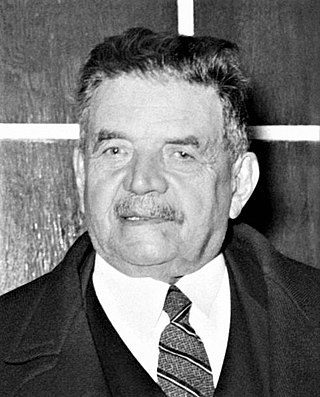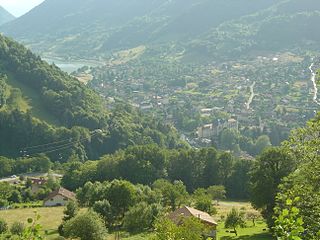This article needs additional citations for verification .(January 2016) |

Revel is a former French brand founded in France in 1851 that manufactured luxury parasols largely for the French expatriates in the former French colonial empire.
This article needs additional citations for verification .(January 2016) |

Revel is a former French brand founded in France in 1851 that manufactured luxury parasols largely for the French expatriates in the former French colonial empire.

François Revel, the founder of Revel, arrived in Lyon, France, around 1830. In Lyon, François Revel joined his brother Pierre at Poncet Frères, a manufacturer of umbrellas, as an apprentice making high quality umbrellas from silk fabrics. Following the shutdown of Poncet Frères, François Revel founded his own company on 2 October 1851.

François Revel’s first silk umbrella manufacturing workshop was located in Lyon, benefiting from the strong regional silk expertise. In 1860, François Revel was joined by his son, Aimé Revel (who was only 16 years old at the time) who often visited customers all over Europe. In 1880, Aimé Revel created the Veritas brand (with a red triangle) and in 1900 he established the brand Parapluie Revel for French market. [1]
The second half of the 19th century saw Revel grow internationally with the company entering the Brazilian and South-East Asia markets.

The international expansion of Revel had started with Pierre Revel in Brazil in 1851. Pierre had moved to Rio de Janeiro a few years prior and was already in the business of importing other French branded parasols and umbrellas into Brazil. In March 1850, Pierre was joined by his two brothers Henri, 19 years old, and Joseph, 32 years old, who sailed on the "Goelette La Fanny" for Rio de Janeiro. [1] Accordingly, it made sense for Revel to enter the Brazilian market given the fact that the Revel brothers were already present in Brazil and had a good knowledge of the local umbrella market.

By the end of the 19th century, Revel expanded into Southeast Asia and particularly in the former French Indo-China. Revel was a provider of sun accessories to French high society in the colonies, those of whom wanted to protect themselves from the harsh external elements such as the rain and sun. In Asian cultures, fair skin is desirable as tanned skin is associated with outdoor manual labour which is typical of the lower class in society. Parasols and umbrellas were primarily sold in Saigon (now known as Ho Chi Minh), Vietnam and then in Singapore in 1886. To meet increasing demand in this region, Revel increased its production and created its own factory in 1931 in Haiphong, Tonkin (the northernmost part of Vietnam).

Beyond Europe, South America and South East Asia, the brand extended its reach to India and Madagascar. It was sold in Madagascar from 1896 as a result of a journey by the French General, Joseph Gallieni. When General Joseph Gallieni arrived in Madagascar in 1896, he learned that only the queen Ranavalona III and noble persons were allowed to be seen using an umbrella. Appalled by this custom, he published a decree in the local newspaper ‘Voa-Voa’ allowing all people (including the indigenous) to use umbrellas. Revel created a local agency in Tamatave to import Revel’s luxury products in the wake of this new decree. [1]
In 1922, Revel engaged the famous Italian poster art designer Leonetto Cappiello to create the famous ad representing three people with umbrellas, it was published by the fine parisian printer's firm, Devambez, in the name of "Les Nouvelles Affiches Leonetto Cappiello". [2]

In 1929, Revel diversified into silk stockings and engaged Leonetto Cappiello once again to promote its new products. The artist was inspired by the previous one (with three with umbrellas) and created a poster with three women with silk stockings.

In 1992, the producer of the drama film The Lover (film) (an illicit affair between a teenage French girl and a wealthy Chinese man in 1929 French Indo-China) asked Revel to recreate for the film, the same parasol, the brand was selling in the former French Indo-China in the 1920s. [3]
Since its inception in 1851, Revel has gained international fame, with its parasols and umbrellas used and endorsed by various people as Paul Valéry of the French Academy, the writer H. G. Wells and Edouard Herriot, former mayor of Lyon (France).[ citation needed ]

An umbrella or parasol is a folding canopy supported by wooden or metal ribs that is mounted on a wooden, metal, or plastic pole. It is usually designed to protect a person against rain. The term umbrella is traditionally used when protecting oneself from rain, while parasol is used when protecting oneself from sunlight, though the terms continue to be used interchangeably. Often the difference is the material used for the canopy; some parasols are not waterproof, and some umbrellas are transparent. Umbrella canopies may be made of fabric or flexible plastic. There are also combinations of parasol and umbrella that are called en-tout-cas.

The Prix de Rome or Grand Prix de Rome was a French scholarship for arts students, initially for painters and sculptors, that was established in 1663 during the reign of Louis XIV of France. Winners were awarded a bursary that allowed them to stay in Rome for three to five years at the expense of the state. The prize was extended to architecture in 1720, music in 1803 and engraving in 1804. The prestigious award was abolished in 1968 by André Malraux, then Minister of Culture, following the May 68 riots that called for cultural change.

Pierre Jean Marie Laval was a French politician. During the Third Republic, he served as Prime Minister of France from 1931 to 1932 and from 1935 to 1936. He again occupied the post during the German occupation, from 1942 to 1944.

Pierre Paul Henri Gaston Doumergue was a French politician of the Third Republic. He served as President of France from 1924 to 1931, succeeding Alexandre Millerand, who had resigned.

Édouard Marie Herriot was a French Radical politician of the Third Republic who served three times as Prime Minister and twice as President of the Chamber of Deputies. He led the first Cartel des Gauches. Under the Fourth Republic, he served as President of the National Assembly until 1954. A historian by occupation, Herriot was elected to the Académie Française's eighth seat in 1946. He served as Mayor of Lyon for more than 45 years, from 1905 until his death, except for a brief period from 1940 to 1945, when he was exiled to Germany for opposing the Vichy regime.

Joseph Simon Gallieni was a French military officer, active for most of his career as a military commander and administrator in the French colonies where he wrote several books on colonial affairs.

Leonetto Cappiello was an Italian and French poster art designer and painter, who mainly lived and worked in Paris. He is now often called 'the father of modern advertising' because of his innovation in poster design. The early advertising poster was characterized by a painterly quality as evidenced by early poster artists Jules Chéret, Alfred Choubrac and Hugo D'Alesi. Cappiello, like other young artists, worked in a way that was almost the opposite of his predecessors. He was the first poster artist to use bold figures popping out of black backgrounds, a startling contrast to the posters early norm.
David Feuerwerker was a French Jewish rabbi and professor of Jewish history who was effective in the resistance to German occupation the Second World War. He was completely unsuspected until six months before the war ended, when he fled to Switzerland and his wife and baby went underground in France. The French government cited him for his bravery with several awards. After the war, he and his wife re-established the Jewish community of Lyon. He settled in Paris, teaching at the Sorbonne. In 1966, he and his family, grown to six children, moved to Montreal, where he developed a department of Jewish studies at the University of Montreal.

Allevard is a commune in the Isère department in the Auvergne-Rhône-Alpes region of southeastern France.
Events from the year 1932 in France.
Events from the year 1925 in France.

Fleury François Richard, sometimes called Fleury-Richard, was a French painter of the Lyon School. A student of Jacques-Louis David, Fleury-Richard and his friend Pierre Révoil were precursors of the Troubadour style.

The Museum of Fine Arts of Lyon is a municipal museum of fine arts in the French city of Lyon. Located near the Place des Terreaux, it is housed in a former Benedictine convent which was active during the 17th and 18th centuries. It was restored between 1988, and 1998, remaining open to visitors throughout this time despite the ongoing restoration works. Its collections range from ancient Egyptian antiquities to the Modern art period, making the museum one of the most important in Europe. It also hosts important exhibitions of art, for example the exhibitions of works by Georges Braque and Henri Laurens in the second half of 2005, and another on the work of Théodore Géricault from April to July 2006. It is one of the largest art museums in France.
Maison Devambez is the name of a fine printer's firm in Paris. It operated under that name from 1873, when a printing business established by the royal engraver Hippolyte Brasseux in 1826 was acquired by Édouard Devambez. At first the firm specialized in heraldic engraving, engraved letterheads and invitations. Devambez clients included the House of Orléans, the House of Bonaparte and the Élysée Palace. Devambez widened the scope of the business to include advertising and publicity, artists’ prints, luxurious limited edition books, and an important art gallery. The House became recognized as one of the foremost fine engravers in Paris, winning numerous medals and honours. With the artist Édouard Chimot as Editor after the First World War, a series of limited edition art books, employing leading French artists, illustrators and affichistes, reached a high point under the imprimatur A l'Enseigne du Masque d'Or – the Sign of the Golden Mask and with PAN in collaboration with Paul Poiret. Édouard's son, André Devambez, became a famous painter and illustrator after receiving the Prix de Rome.

The Place des Jacobins is a square located in the 2nd arrondissement of Lyon. It was created in 1556 and a fountain was added in 1856. The square belongs to the zone classified as World Heritage Site by UNESCO. According to Jean Pelletier, this square is one of the most famous in Lyon, because of its location in the center of the 2nd arrondissement and its heavy traffic, as 12 streets lead here. The square, particularly its architecture and its features, has changed its appearance many times throughout years.

Parapluie Revel is the former leading brand of the company Revel.

Borocera cajani, also known as landibe in Malagasy, is a species of silk-producing lasiocampid moth endemic to Madagascar. It is often confused with the similar Borocera madagascariensis, which has the same Malagasy name. However, B. cajani is the species associated with silk production in highland Madagascar, while B. madagascariensis is found in the coastal portion of the island.

The JOB collection is a production of graphic works consisting of calendars, posters and postcards advertising the JOB rolling paper factory. Artistic in character, it was illustrated by renowned painters and poster artists, mainly during the Art Nouveau period.